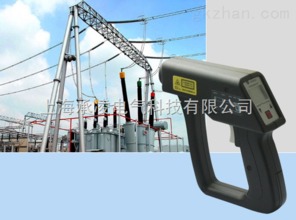Understanding the Dynamic Host Configuration Protocol (DHCP)
 The Dynamic Host Configuration Protocol (DHCP) is a crucial network protocol that simplifies the process of assigning IP addresses and other network configuration parameters to devices on a network. By automating this process, DHCP reduces the administrative burden on network administrators and ensures that devices can connect to the network seamlessly.
The Dynamic Host Configuration Protocol (DHCP) is a crucial network protocol that simplifies the process of assigning IP addresses and other network configuration parameters to devices on a network. By automating this process, DHCP reduces the administrative burden on network administrators and ensures that devices can connect to the network seamlessly.
DHCP operates by assigning IP addresses dynamically, which means that each device does not need to be manually configured with a unique IP address. This is particularly useful in large networks where managing IP addresses manually would be impractical. The protocol also handles other network configuration parameters, such as subnet masks, default gateways, and DNS servers, ensuring that devices have all the necessary information to connect to the network.
How DHCP Works
 The DHCP process begins when a device connects to a network. The device sends a DHCP discover message to the network, requesting an IP address. The DHCP server on the network responds with a DHCP offer, containing an available IP address and other configuration parameters. The device then sends a DHCP request to confirm the offered IP address. Finally, the server sends a DHCP acknowledge message, confirming the assignment of the IP address to the device.
The DHCP process begins when a device connects to a network. The device sends a DHCP discover message to the network, requesting an IP address. The DHCP server on the network responds with a DHCP offer, containing an available IP address and other configuration parameters. The device then sends a DHCP request to confirm the offered IP address. Finally, the server sends a DHCP acknowledge message, confirming the assignment of the IP address to the device.
This process is efficient and ensures that IP addresses are not wasted or duplicated. DHCP also supports lease management, which allows the server to reclaim IP addresses that are no longer in use, making them available for other devices.
Features of DHCP
 Here are some key features of the DHCP protocol:
Here are some key features of the DHCP protocol:
| Feature | Description |
|---|---|
| Dynamic IP Address Assignment | Automatically assigns IP addresses to devices on the network without manual configuration. |
| Lease Management | Manages the duration for which an IP address is assigned to a device, allowing for efficient use of IP address resources. |
| Configuration Parameters | Assigns other network configuration parameters, such as subnet masks, default gateways, and DNS servers. |
| Address Pooling | Supports the creation of address pools, allowing for the allocation of IP addresses from a predefined range. |
| Redundancy and Failover | Supports redundancy and failover mechanisms to ensure high availability of the DHCP service. |
Benefits of DHCP
The use of DHCP in a network offers several benefits:
– Simplifies network administration by automating IP address assignment.- Reduces the risk of IP address conflicts and ensures efficient use of IP address resources.- Improves network performance by minimizing the time required for device configuration.- Enhances network security by allowing for centralized management of network configuration parameters.
Implementing DHCP
Implementing DHCP in a network involves setting up a DHCP server and configuring it with the necessary IP address ranges and configuration parameters. The server can be installed on a dedicated device or as a service on an existing network device, such as a router or switch.
To set up a DHCP server, you will need to:- Determine the IP address range to be used for assigning IP addresses.- Configure the server with the necessary network configuration parameters, such as subnet masks, default gateways, and DNS servers.- Enable the DHCP service on the server and configure any additional settings, such as lease duration and address pooling.
Conclusion
The Dynamic Host Configuration Protocol (DHCP) is a vital network protocol that simplifies the process of assigning IP addresses and other network configuration parameters to devices on a network. By automating this process, DHCP reduces the administrative burden on network administrators and ensures that devices can connect to the network seamlessly. Implementing DHCP in a network can provide numerous benefits, including simplified network administration, efficient use of IP address resources, and improved network performance.










